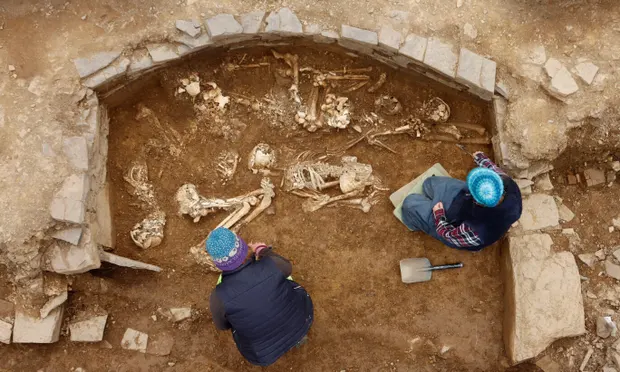Archaeologists studying an ancient site in the North Sea say they have found a “feat of engineering” nearly 1,000 years older than the famed pyramids of Egypt. Located on the remote British island of Orkney, the find included Neolithic architecture that was considered well ahead of its time, as well as fourteen skeletons, offering a glimpse into the builders of this ancient site.
“They really are engineering feats,” said Dr. Hugo Anderson-Whymark, senior curator of prehistory (neolithic) at the National Museums Scotland and one of the researchers responsible for the new find. “The tomb would have been an immense feature in the landscape when it was originally constructed, and the stonework inside would have been very impressive.”
100-Year-Old Discovery Yields 5,000-Year-Old Treasures
Notably, the site was initially ransacked for its stone in the 18th and 19th centuries but otherwise dismissed as being of any historical significance. Then, in 1896, a local farmer stumbled upon part of the newly discovered chamber and eight bodies, resulting in an “antiquary” named James Walls Curister writing about it in a local newspaper.
Still, the site was more or less lost to history until Anderson-Whymark spotted the old article. Focusing on Curister’s description of a “chambered cairn” uncovered by the 19th-century farmer, Anderson-Whymark and his colleague Prof Vicki Cummings, a professor of neolithic archaeology at Cardiff University, zeroed in on the location. Soon, a team of students from the University of Central Lancashire and some local volunteers joined the search. After three weeks of work, the impressive feat of engineering and the bodies held within were unearthed.
“We had found not only the tomb but then in situ articulated skeletons – the icing on the cake,” Anderson-Whymark remarked.
Further analysis determined that the site was initially built around 3,000 BC, nearly a thousand years before Egyptian workers built the pyramids, which are often considered the most impressive feat of engineering from the ancient world. The site also appears to have been in use for centuries after it was first constructed, with numerous bodies from different generations found buried there.
“They were certainly putting bodies on top of bodies, but they appear to have gone in over a period of time,” said Anderson-Whymark.
Ancient Feat of Engineering Still Has More Clues to Offer
The researchers say that more work is needed to thoroughly inventory and analyze the ancient site while noting how fortunate they were to find it in the first place, given its remote location and the disregard paid to it in previous centuries.
“It’s incredible to think this once impressive monument was nearly lost without record,” Anderson-Whymark said. “Orkney is exceptionally rich in archaeology, but we never expected to find a tomb of this size in such a small-scale excavation.”
Moving forward, the team hopes that DNA analysis of the recovered skeletons may offer even more insights into the builders of this ancient feat of engineering, including whether or not those buried here centuries later were related to the original builders.
“It is incredibly rare to find these tomb deposits, even in well-preserved chambered tombs,” said Cummings, “and these remains will enable new insights into all aspects of these people’s lives.”
Christopher Plain is a Science Fiction and Fantasy novelist and Head Science Writer at The Debrief. Follow and connect with him on X, learn about his books at plainfiction.com, or email him directly at christopher@thedebrief.org.

